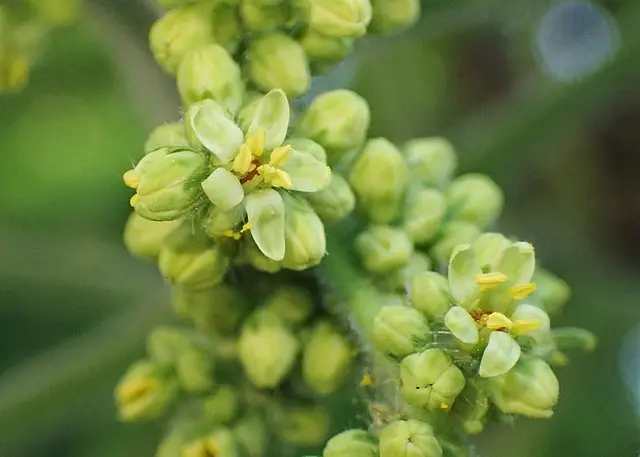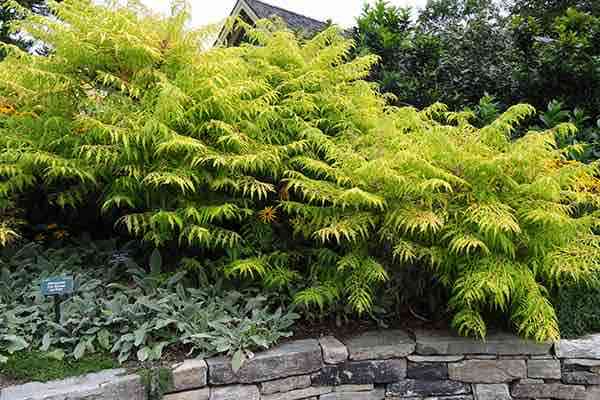Your cart is currently empty!
South East Asia Highlight: NoonNooch, Elephants and Tra Su Bird Sanctuary
Discover the beauty of Nongnooch Tropical Botanical Garden nestled south of Bangkok. Join us in this unique and immersive experience.
Your cart is currently empty!
Photo:
Jean Carr
Staghorn Sumac puts on a startling display of color in the fall. It is a pleasing sight, especially in the fall, when the leaves turn extremely colourful. It is dioecious, with male and female flowers on separate plants.


Female flowers produce showy pyramidal fruiting clusters (up to 8″ long), each containing numerous hairy, berry-like drupes that ripen bright red in autumn and gradually turn dark red as they persist through much of the winter.
Male flowers are small, greenish-white or yellow in colour, and form dense terminal panicles.
Male flowers bloom from May to June, while female flowers bloom from June to September.
Staghorn Sumac natural habitats are sandy and rocky sites and abandoned fields. They are easily grown in full sun to part shade in average, dry to medium moisture, well-drained soils. Staghorn Sumac are adaptable to many soil types, but they must be well drained. They are generally adaptable to urban environments. In the wild, this suckering shrub will form thickets through self-seeding and root suckering; for this reason, it is not recommended in small gardens as it suckers and spreads quickly..
It is named after the horns of a male deer (stag) due to its soft, velvety, antler-like branches.
Does best on well-drained, sandy, poor-quality, dry, sterile soils but is adaptable.

They can be invasive for most shrub borders. Spreads by root suckers. Easily transplanted. Best on hard-to-cover areas with poorer soils or for naturalizing in wild areas. Adaptable to other soil types but does best on well-drained, sandy, poor-quality, dry, sterile soils. Tolerates city conditions.
Discover the beauty of Nongnooch Tropical Botanical Garden nestled south of Bangkok. Join us in this unique and immersive experience.
All the tomatoes that I am growing, Yellow Pear, Pink Ponderosa, Polish Raspberry, Black Krim, Red Currant, are heirloom and indeterminate.
New gardeners and even some veteran gardeners add far more garden fertilizer than their vegetables need, maybe causing plants to struggle.
My next big chore is to protect my roses. All of my roses are hardy, and most are on their own roots, so they do not need a lot of help.
Learn more about Lydia Wong's bee cocoon study and discover how to plant peas from seed in this weekend gardening article! Lydia was amazed by the garden, check out the double bloodroots, bee cocoons, and more! Enjoy the wonders of early spring as you grow and pot up your pea plants with a greenhouse and compost/garden soil mixture for safety and success!
Stop at this month's fascinating Myrmecophila galeottiana orchid to learn about its unique relationship with ants, then explore Vallarta Botanical Garden's great diversity of other orchids!
GardeningCalendar.ca gets some funding from advertisers. If you click on links and advertisements at no cost to you, the site may receive a small commission that helps fund its operation.
© 2025 J&S Calendars Ltd.
Leave a Reply
You must be logged in to post a comment.